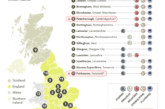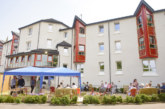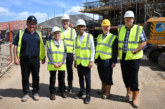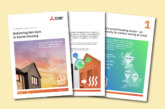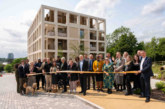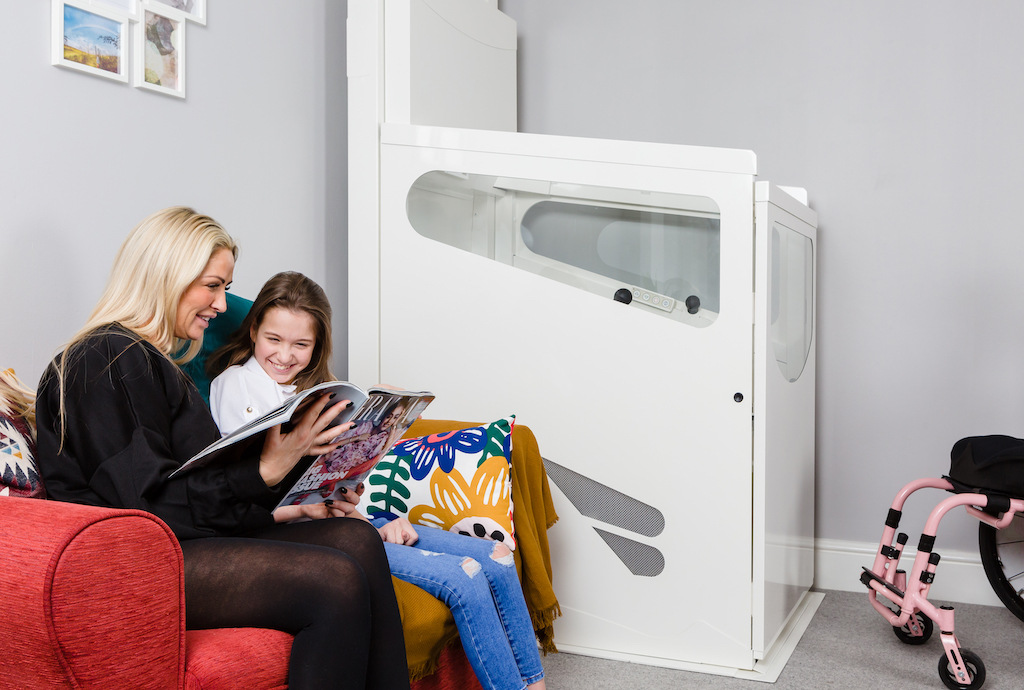
Everyone has a responsibility to be vigilant and prepared in case of fire. Like many UK-based fire and rescue services, the London Fire Brigade is proactive in promoting fire safety in the home. One key area is a home escape plan. Steve Hill, National Sales Manager for Terry Lifts, offers advice on fire protection and domestic through floor lifts.
The brigade advises ‘if you — or anyone you live with — might find it difficult to escape quickly without assistance in an emergency, make extra plans to get them to safety,’ and goes on to offer a free home fire safety visit for additional expert advice. This is especially important and must be a vital consideration for those individuals using a lift to travel between floors in their home.
Through floor lifts
Through floor lifts have risen in popularity since several models were introduced to the market in the 1980s. As the name suggests, a through the floor lift offers an easy and invaluable means of movement between two floors for less able individuals, particularly those in a wheelchair.
Today, the UK home lift market boasts several manufacturers and many suppliers of through floor lifts. However, not all lifts are made equal when it comes to smoke and fire protection.
Smoke and fire protection barrier
A through the floor lift requires an opening to be created for the lift to pass through when travelling from floor to floor. This instantly compromises the fire integrity and removes the fire protection of the first-floor structure — potentially enabling a fire to move freely between floors.
In England and Wales, there is no statutory requirement to fit any fire protection to the underside or the top cover trapdoor for residential installations of through floor lifts. This can mean that there is no fire barrier between the floors, bearing in mind that in many cases the lift is positioned between a living room and a bedroom. This can prove extremely significant when trying to minimise the spread of smoke and fire to ‘buy’ time to allow a safe means of escape.
Some home lift suppliers believe that the addition of fire doors to compartmentalise the house helps to mitigate the risk. This is true but only to some extent as fire doors only deal with the horizontal spread of smoke and flame. This is not sufficient fire protection for a property with a through floor lift as, without vertical compartmentalisation, smoke and fire would be able to travel through the aperture and between the floors, unimpeded.
Lift manufacturers and suppliers who cannot comply with BS 5900:2012 often recommend the fitting of fire doors to the rooms served by the lift but this does not diminish the vertical compartmentalisation requirement.

Standard BS 5900:2012
BS 5900:2012 applies to powered home lifts with partially enclosed carriers and no lift way enclosures serving two floors in private dwellings only. The standard specifies requirements for the design, manufacture, installation, commissioning, testing, maintenance and dismantling of new permanently installed electrically powered home lifts. It can also be used as guidance for the refurbishment and re-installation of existing home lifts. The standard addresses both Fire protection (9.12) and Behaviour of home lift in the event of the fire (9.13).
BS 5900:2012 meets the essential health and safety requirements of Machinery Directive 2006/42/EC as enacted as the Supply of Machinery (Safety) Regulations 2008.
For best practice, a through the floor lift must comply with BS 5900:2012 and be independently tested by an approved body. Terry Lifts’ Harmony home lift, for example, is compliant to BS 5900:2012 — maintaining 30-minute fire and smoke integrity between the two floors, whether it is parked upstairs or downstairs.

Smoke and heat detectors
In addition to smoke and fire seals, some lift manufacturers also provide smoke alarms as standard. These are positioned at each level. Heat detectors are often provided as an alternative if the lift is adjacent to a kitchen, this prevents accidental activation from cooking smoke.
When the smoke detectors are activated, the lift is isolated to ensure it cannot be used. If the lift is in use, the home lift is taken out of action once it reaches its destination. At any point during transit, even though the smoke detectors have been activated, a change in direction is possible. Normal door and light operation are still available at landings.

Full compliance
To our mind, it is imperative that any specified product and product installation must demonstrate full compliance with BS 5900:2012, the Machinery Directive and Building Regulations, all of which have been written with the safety of the building occupiers and emergency services in mind.
It is also critical that a compliant home lift is installed by a competentengineer, ideally qualified to a minimum of NVQ Level 2 in Platform Lift Installation / Service & Repair and carrying a Construction Skills Certification Scheme (CSCS) card.
Furthermore, as every site will differ it is critical that the local Building Control Officer has conducted a site visit to ensure structural alterations and fire protections are to standard.


